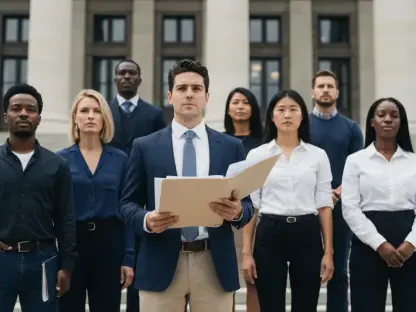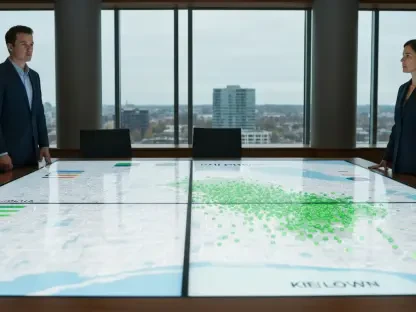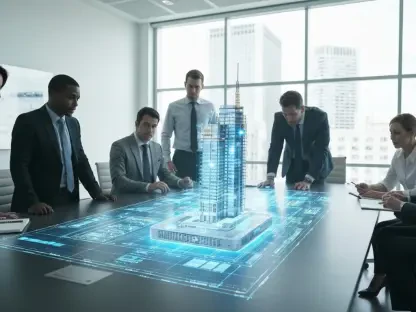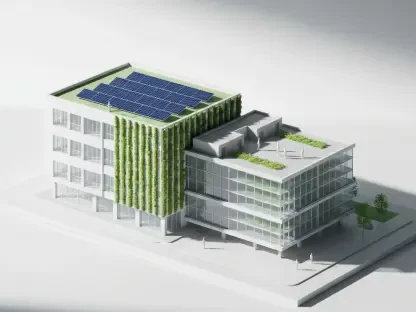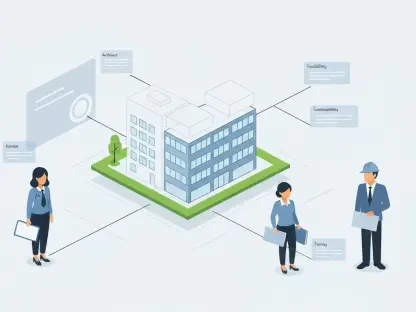London’s housing crisis presents an increasingly complex challenge that demands innovative solutions. The city’s property market has witnessed an exponential rise in prices, rendering homeownership unattainable for many residents. Recently, the landscape of London’s housing policy shifted as Mayor Sadiq Khan proposed a new approach aimed at assuaging the acute shortage of affordable housing. This involves exploring fresh possibilities within the city’s green belt, a ring of land traditionally preserved to prevent urban expansion. As the capital grapples with this ever-deepening crisis, the exploration of green belt repurposing emerges as a pivotal aspect in finding a sustainable resolution.
Unpacking London’s Housing Crisis
Drastic Rise in Property Prices
The escalating property values in London underscore the pressing nature of the housing crisis. Data from the UK’s Land Registry illustrate a dramatic increase in property costs over the years. In Camden, a terrace house now demands an average price of over £1.5 million, a rate nearly triple that of two decades ago. Similarly, the cost of a semi-detached home in Richmond has soared to around £2 million, marking a near quadruple increase. Such figures reflect a concerning trend where living in the city is increasingly beyond reach for average citizens. These surging prices stem from a complicated interplay of insufficient supply and high demand, further straining the already beleaguered housing sector and exacerbating the city’s affordability struggles.
Stagnation in Affordable Housing Construction
While property prices climb, the efforts toward expanding affordable housing options have not kept pace. Data reveals a sluggish rate of progression within London’s housing initiatives, particularly those focused on affordability. From March 2024 to March 2025, only 3,661 affordable homes were initiated under the mayor’s program, ranking as the second-lowest since 2008. Despite being a slight increase from the previous year’s historically low figure of 2,358, the efforts still fall short of outlined targets. This stagnancy paints a bleak picture of current attempts to alleviate housing woes, highlighting significant gaps between policy objectives and concrete outcomes.
Rethinking Green Belt Utilization
Green Belt Policy Shift
The green belt, originally instituted to contain urban sprawl, is now at the center of a critical policy re-evaluation. Sadiq Khan’s new proposal highlights the potential for transforming underutilized parts of this protected area for residential development. Contrary to its idyllic public perception, substantial portions of the green belt consist of low-grade agricultural land lacking in ecological or scenic value. This opens a dialogue on repurposing select sections without undermining conservation efforts. Khan’s pivot toward utilizing the green belt exemplifies a bold maneuver aiming to bridge the vast disparity between available land and housing needs, marking a distinct departure from traditional conservational policies.
Balancing Development and Conservation
The debate around reconfiguring the green belt brings conservationists and urban planners to the discussion table, each group focusing on unique priorities. Robert Colvile, Director of the Centre for Policy Studies, underscores the pragmatic aspect of land use within the belt. Colvile identifies approximately 12% of the green belt as low-utility land, suitable for housing projects accompanied by necessary infrastructure. This approach could potentially accommodate millions of homes while maintaining ecological commitments. Nevertheless, Khan’s policy shift necessitates careful navigation of political and community dynamics to ensure the resultant developments respect ecological limits and community aesthetics while fulfilling the city’s burgeoning housing requirements.
Navigating Political and Social Complexities
Engagement with Stakeholders
Mayor Khan’s strategy introduces a new facet to his political agenda, emphasizing collaboration with relevant stakeholders to address London’s critical housing deficit. The receptiveness of governmental bodies plays a crucial role in actualizing these ambitious plans, necessitating constructive dialogues geared toward mutually beneficial solutions. A notable element of this discussion is the mayor’s cooperation with a responsive government that offers fresh opportunities for negotiation. However, discussions around green belt development often encounter skepticism from various community factions, keen on preserving their access to green spaces. It’s crucial that oversight incorporates public feedback and expert consultations to aid in sculpting balanced policies conducive to sustainable urban growth.
Anticipating Public Reaction
The potential backlash from suburban residents worried about encroaching urbanization is a substantial hurdle in executing green belt development plans. To mitigate resistance, there’s an emphasis on ensuring that areas designated for new homes are carefully chosen and that development projects maintain community amenities. Mayor Khan has posited that the controversial Ultra Low Emission Zone (ULEZ) charge will not extend into the newly developed areas, a preemptive measure to allay some resident concerns. This gesture underscores the importance of addressing community apprehensions and demonstrates a commitment to inclusivity in the policy development phase, striving to balance progress with existing lifestyle values and environmental interests.
Prospects for London’s Housing Strategy
London is currently grappling with an intricate housing crisis that necessitates inventive solutions. Property prices in the city have skyrocketed, making it increasingly difficult for many residents to afford homeownership. In response to this serious issue, Mayor Sadiq Khan recently unveiled a new strategy designed to mitigate the severe shortage of affordable housing. A significant component of this initiative involves reassessing the potential uses of London’s green belt, a ring of land historically preserved to curb urban sprawl. This proposal marks a noteworthy shift in housing policy, offering an opportunity to address London’s deepening housing dilemma. As the metropolis strives to manage this persistent issue, the idea of repurposing parts of the green belt emerges as an essential part of developing a sustainable solution. By reimagining how this land can be utilized, the city hopes to strike a balance between conserving nature and providing accessible housing for its growing population.



